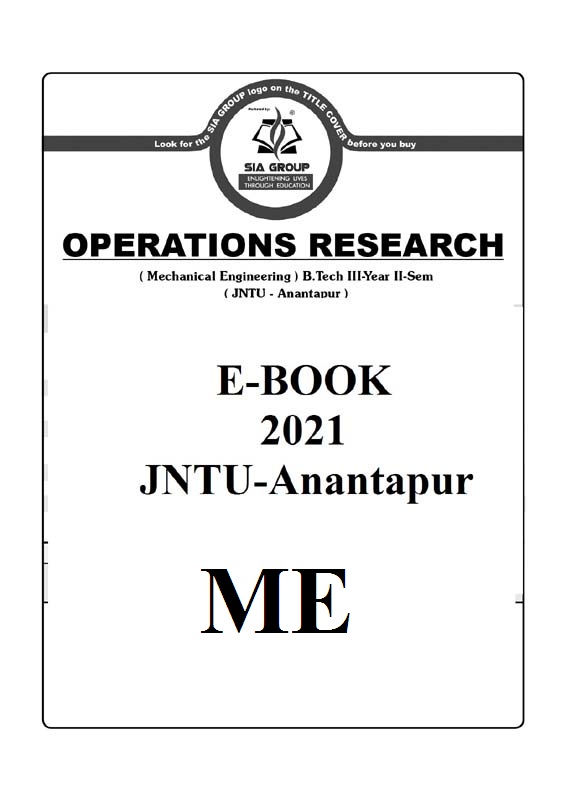

Note: Please check your Spam or Junk folder, in case you didn't receive the email with verification code.
SYLLABUS
Unit–I
Introduction To OR AND LINEAR PROGRAMMING-1 OR Definition – Classification of Models – Types of Operations Research Models, Linear Programming – Problem Formulation, Graphical Method, Simplex Method, Two-Phase Simplex Method, Big-M Method - Special Cases of LP- Degeneracy, Infeasibility and Multiple Optimal Solutions.
Unit–II
Linear programming-2 Duality – Principle, Economic Interpretation of Duality, Dual Simplex Method Transportation Problem – Formulation; Different Methods of Obtaining Initial Basic Feasible SolutionNorth-West Corner Rule, Least Cost Method, Vogel’s Approximation Method; Optimality MethodsStepping Stone Method and Modified Distribution (MODI) Method; Special Cases - Unbalanced Transportation Problem, Degenerate Problem. Assignment Problem – Formulation; Optimal Solution - Travelling Salesman Problem.
Unit–III
Game Theory Introduction – Minimax (Maximin) Criterion and Optimal Strategy, Saddle Point, Solution of Games with Pure Strategy – Games with Mixed Strategies – Dominance Principle – Graphical Method, Algebraic Methods, Sub Matrices Method. Queuing theory Introduction – Terminology, Service Channel, Arrival Pattern, Population, Departure Pattern (Service Pattern), Queue Discipline, Birth and Death Process, Balking, Reneging, Jockeying; Single Channel Models with Poisson Arrivals, Exponential Service Times with Finite Queue Length and Non-Finite Queue Length; Multichannel Models with Poisson Arrivals, Exponential Service Times with Finite Queue Length and Non Finite Queue Length.
Unit–IV
Sequencing – Assumptions-n-jobs-2 Machines model, n-jobs-3-machines models and n-jobs-m Machines Models. PERT and CPM Introduction to Project Management, Activities, Events, Predecessor Relationships, AOA Diagram, Early Start, Early Finish, Late Start and Late Finish Times, Earliest Occurrence and Latest Occurrence of the Event, Total Float, Free Float, Independent Float. CPM – Deterministic Model- Critical Path, Crashing, Optimal Project Duration, Least Possible Project Duration PERT – Probabilistic Model- Various types of Activity Time Estimates, Standard Deviation and Variance of the Activities and Projects, and Probability of Completing the Project within scheduled time.
Unit–V
Dynamic programming Introduction – Bellman’s Principles of Optimality – Applications of Dynamic Programming- Capital Budgeting Problem – Shortest Path Problem – Solution of Linear Programming Problem by DP. Replacement models Introduction – Types of Replacement Problem, Determination of Economic Life of an Asset, and Simple Probabilistic Model for Items which completely fail-Individual Replacement Model, Group Replacement Model.
 No Preview is available for this book
No Preview is available for this book

 Get 100 instant uPoints on the purchase of Rs.100 or above for each order.
Get 100 instant uPoints on the purchase of Rs.100 or above for each order.
CategoriesEngineering

Format PDF

TypeeBook